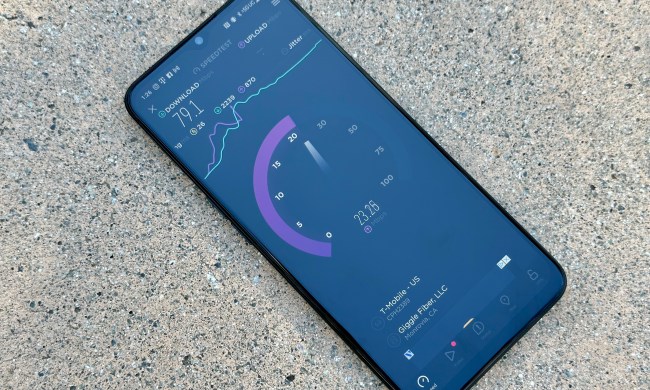OnePlus, like pretty much every other tech company out there, wants to demonstrate the power of 5G. But while other companies are doing so with screenshots of the speeds their phones can achieve, OnePlus is taking a different path. Yep, that’s right — with a 5G-equipped robot that can hurl snowballs at other robots via a simple internet portal.
The limited-time experience just launched, and you can check it out for yourself by heading to the Snowbot Battle page on your mobile device. To sign up, you will have to sign in to your OnePlus account, or create one if you don’t have one. It starts at 12 p.m. PT on Monday, March 9, and lasts for a hefty 70 hours — so it’ll end on March 12.
Each user can play once, and you’ll basically control one robot in a team of two Snowbots. All you have to do is fire snowballs at the robots on the opposing team. You’ll only get eight snowballs, and to win you have to hit the enemy Snowbots more than they hit you.
It doesn’t seem as though you need a OnePlus device to join the fight either. OnePlus’ announcement says that anyone on any device from around the world can control the OnePlus Snowbots through the dedicated website. You will need a 5G connection or good Wi-Fi connection to control Snowbots, however.
The Snowbots themselves are pretty interesting in terms of design. They’re built using a OnePlus phone mounted on the inside of each bot, which essentially functions as the eyes of the robot. Apart from that, the robots are connected to 5G, ensuring that you can control them with low latency.
OnePlus itself has launched a number of 5G-enabled phones. The first OnePlus 5G phone was the OnePlus 7 Pro 5G, which was succeeded by the OnePlus 7T Pro 5G. It’s expected that most smartphone manufacturers will start including 5G-compatibility in their devices by default this year — so it’s possible that the standard model of the OnePlus 8 will offer 5G support.
Interested in checking out Snowbots for yourself? All you have to do is head over to the OnePlus Snowbots website and log in using your OnePlus account.



